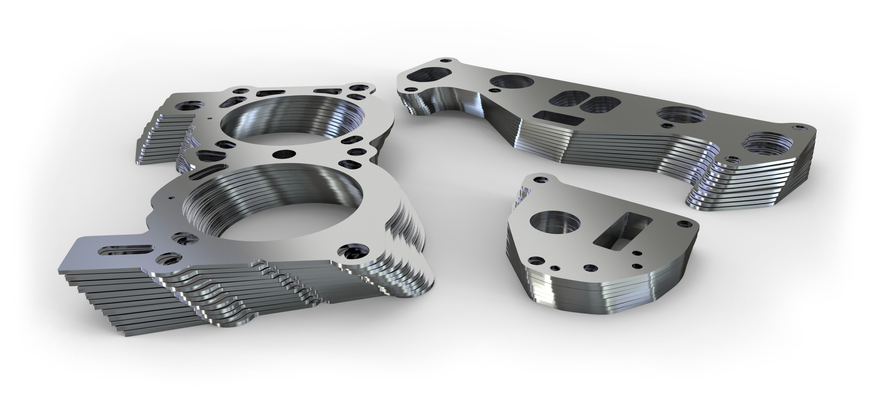Inspection is a crucial step in the metal manufacturing process. It helps ensure that the produced parts meet the specified requirements in terms of dimensions, tolerances, and quality. As a result, inspection can be more involved than many people think, but it’s always good to have a better understanding of the process. Knowing how to inspect sheet metal parts can help you better communicate with your metal parts suppliers and foster a stronger, more collaborative relationship. With that in mind, let’s dive deeper into the types of inspection that are normally involved in the metal manufacturing process and how you can help set your project up for success.
What are the Different Types of Inspection?
If you want to know more about how to inspect sheet metal parts so you can communicate with your metal parts supplier more effectively, it’s important to understand how many different types of inspections there are. While it may vary somewhat from supplier to supplier, you can expect several subcategories, including:
- Visual inspections—The most basic form of inspection, it involves inspectors examining the sheet metal parts for any visible defects, such as scratches, dents, surface irregularities, or inconsistencies in color and finish.
- Dimensional inspections—These inspections make use of measuring tools to verify critical dimensions and tolerances. Common tools include calipers, micrometers, height gauges, and depth gauges.
- CMM inspection—A more advanced inspection that verifies dimensions via an automated program. CMMs are used for extremely precise 3D measurements of complex geometries that are challengings to measure manually.
- Gauge inspection—Verifies that the thickness of the material (aka the gauge) meets the specified requirements.
- Surface Roughness measurement—Instruments such as profilometers measure surface roughness to ensure it falls within acceptable limits, as surface roughness can impact the performance of the part.
- Bend and form inspection—Angle gauges and templates verify that bends match design specifications. You can also inspect for cracks or other deformations during this process.
- Weld inspection—Required if the sheet metal parts involved welding. Visual inspection, dye penetrant testing, and ultrasonic testing can be used to test weld quality.
Setting Your Project Up for Success
Now that you have a better idea of how to inspect sheet metal parts, what can you do with this information? For one thing, knowing how the inspection process works can help you better communicate requirements, set expectations, and ensure final products meet requirements.
When discussing your needs with your supplier, you can expect to cover topics like specification, tolerance and acceptance criteria, and final acceptance criteria. You should also give some thought to the prototyping and sample inspection phase, as this will help you verify the manufacturing process before going into full production so you and your metal supplier can address any issues early on.
Beyond that, be sure to ask your supplier about inspection frequency and sampling plans, documentation, and set expectations around communication channels.
How to Inspect Sheet Metal Parts: A Few Additional Notes
Before we conclude, there are a few other things about inspection in metal manufacturing that are important to keep in mind.
First, it might be useful to know that inspection is an iterative process, not a one-time event. This means that various types of inspections likely take place throughout every stage of the production process. This gives you the opportunity to provide feedback so that the process can be tweaked and improved if needed.
Inspection is also one area of manufacturing rapidly evolving with the addition of automated systems. For example, many manufacturers have adopted the use of robotic arms with sensors and computerized vision systems to streamline inspection and improve accuracy. Automation may also play a role in real-time monitoring.
Another advanced capability comes in the form of three-dimensional inspections. This is made possible through the use of technologies like laser scanners and structured light systems, which create 3D models for a more comprehensive analysis.
Experience a Commitment to Quality at Advantage Metal Products
As a full-service machine shop that has been manufacturing and supplying expertly-crafted metal components for more than 30 years, we know a thing or two about quality and inspections. With investments in some of the most advanced technology, such as the Keyence WM-3000 CMM and the Virtek 3D Laser Scanning machine, and a skilled team of trained experts, we’re committed to ensuring that your metal components meet your requirements every time.
Connect with our team today to get started.

